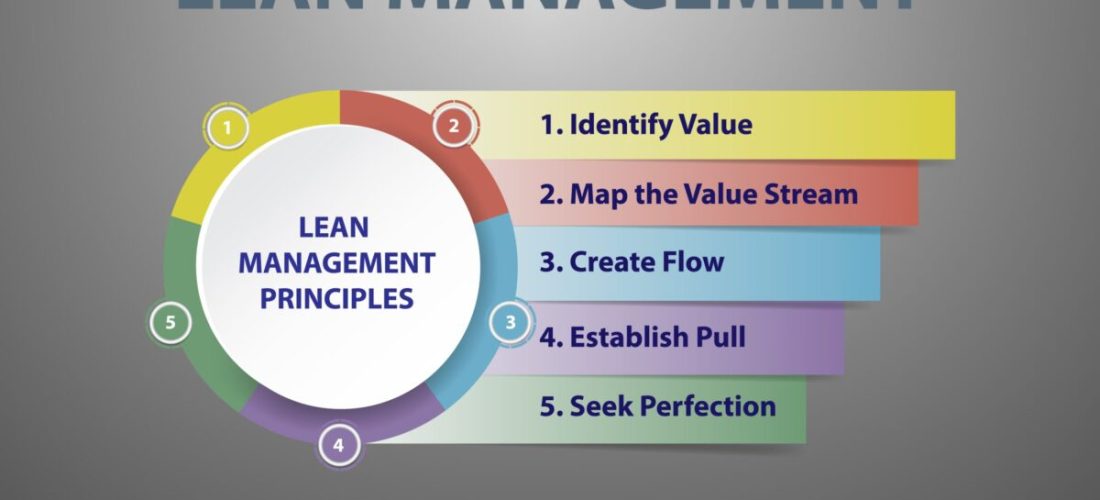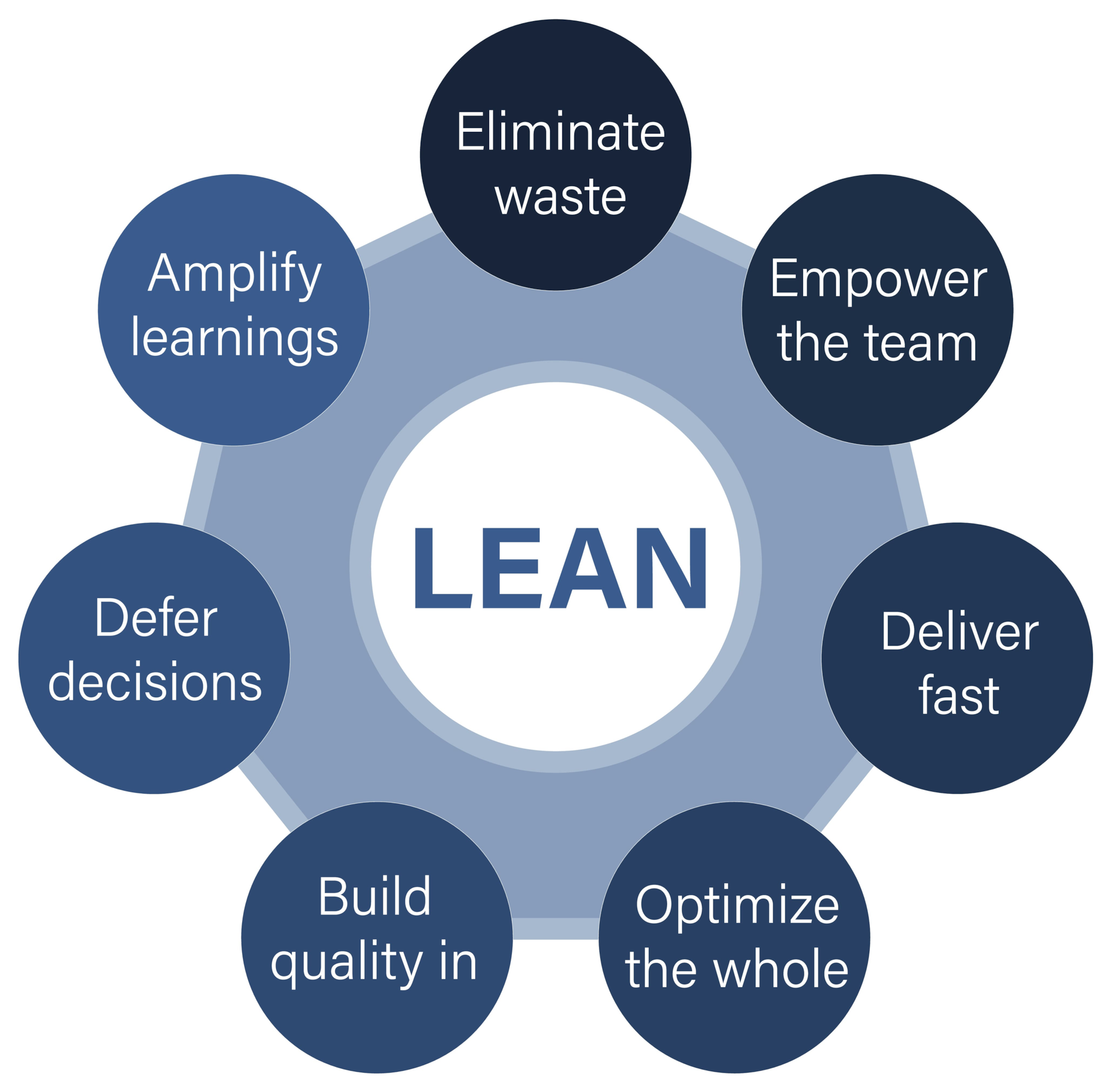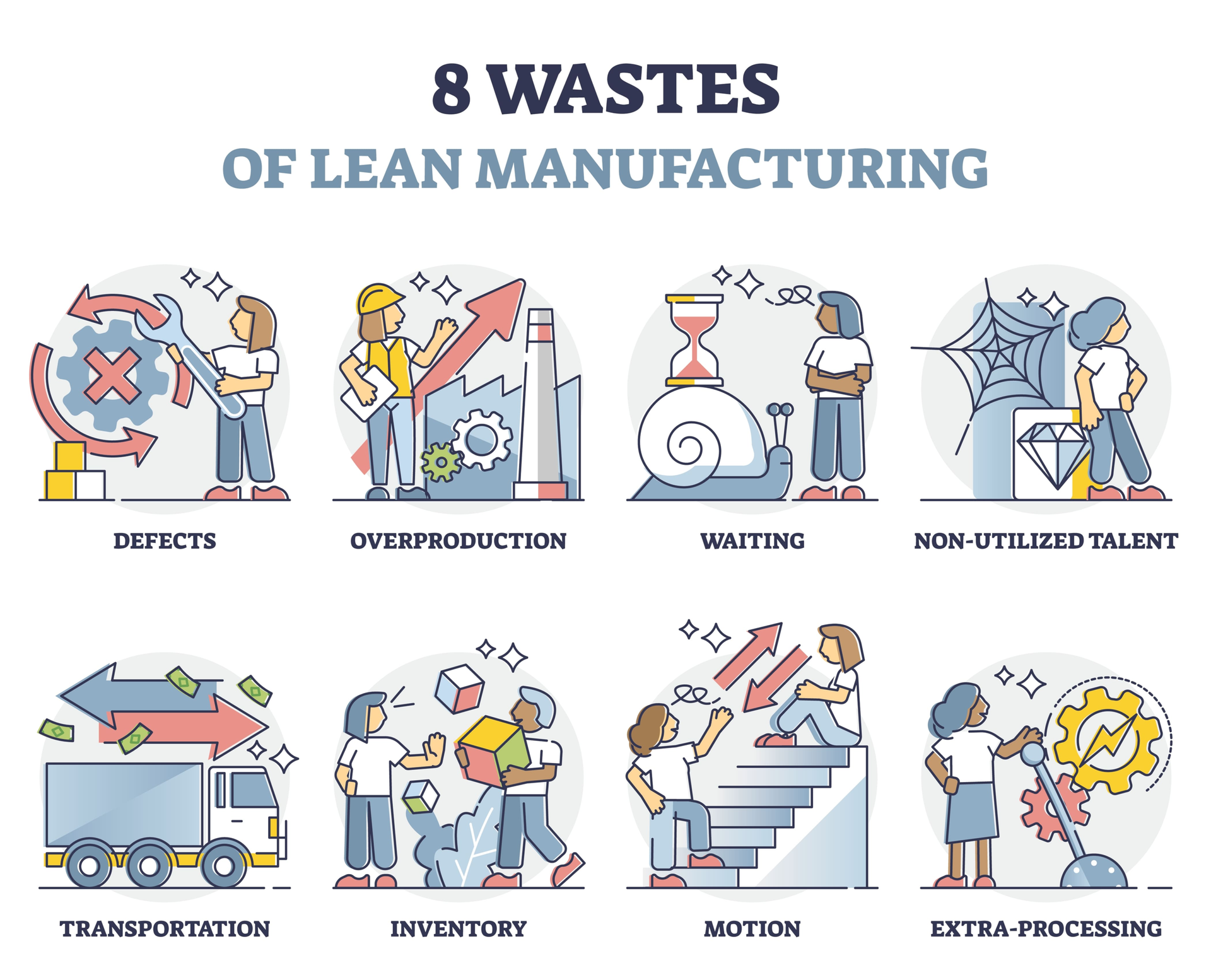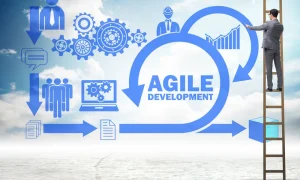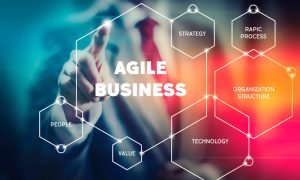Alignment of project portfolios with lean-type principles is not only cost effective—it is also value effective with accuracy and responsiveness. The traditional approach to portfolio management that results in inefficiencies when not aligning with Lean-Agile ways of working can be significantly improved by adopting a lean approach that will, in essence, reduce wasted time and effort, continually prioritize customer needs, and turn the entire traditional portfolio management upside down to better serve the needs of Lean-Agile teams. This article removes the mystery from the lean project portfolio management principles providing a concise look at how this approach would be used to prioritize value, remove waste, and align projects closely with business objectives.
Anticipate learnings on flow creation and pull systems usage and get ready to overcome typical barriers to lean implementation. This primer is probably the right thing for you if you intend to fine-tune your portfolio strategy without too much extra information.
Key Takeaways
- Lean Portfolio Management (LPM) enhances project management by focusing on customer value, waste reduction, and aligning projects with strategic business goals to optimize resources and prioritize high-impact initiatives.
- Effective Lean Portfolio Management requires a governance structure that balances oversight with team empowerment, ensuring decisions are made to promote innovation while adhering to compliance and strategic alignment.
- Adoption of Lean Portfolio Management involves using suitable tools for efficiency, setting strategic KPIs for performance measurement, and overcoming challenges through risk management and organizational culture change.
Embracing Lean Thinking in Portfolio Management
Having its roots in the manufacturing industry, lean thinking has now moved to portfolio management, according to the large number of advantages provided. This method focuses on value creation with the constrained resources and waste reduction, and it is thus highly suitable for the efficient project portfolio management.
Integrating lean portfolio management practices allows organizations to get value from the portfolio throughout the teams. These practices are iterative funding and continuous planning, strategic themes and leaders, mental and cultural change, space for new ideas and organizational pivots, and organization reprioritization and change based on iterative cycles and feedback.
The question is how can we implement these principles within our portfolios?
Defining Lean Principles
Lean Portfolio Management (LPM) originated from the Lean Thinking philosophy, whose purpose is to improve portfolio management processes. These principles revolve around five key ideas: valuing from the aspect of the customer, activity and resources flow mapping, eliminating waste, pull system strategy, and continuous improvement.
LPM removes the wastes such as over-production, redundancy and imposition of waiting on the part of consumers by understanding what the customers value and creating a highly efficient workflow without unnecessary steps or features. This approach also encourages continuous improvement towards perfection, leading to superior customer value-driven customer satisfaction.
Lean’s Impact on Project Portfolios
Adoption of Lean principles in portfolio management is profound. This approach makes customers the criteria for the priority of projects and ensures that resources are allocated efficiently to portfolio initiatives. This approach does not only improve the project results but also assures the strategic compliance between the business purpose and project realization as well as agility and flexibility within the organization’s activities.
Crafting a Lean Portfolio Strategy
The next station on the way to implementing Lean Portfolio Management is establishing a portfolio strategy which is based on lean principles. This way ensures that investments are directed according to the business aims which in turn enables the accomplishment of value for customers and the optimization of processes leading to better outcomes.
Aligning Investments with Strategic Objectives
The harmonization of investments and strategic objectives is one of the essential aspects of a lean portfolio implementation strategy. This ensures that project investments are aligned with organization’s general goals, focusing resources and efforts on initiatives that have maximum effect on customer satisfaction and business performance.
Streamlining the Investment Funding Process
Lean thinking principles have a great influence on efficiency of investment funding especially in the context of the crucial role of strategy and investment funding. This method guarantees the alignment of the entire portfolio with the organization’s strategic objectives by linking the strategic objectives to value streams.
It requires the joint work of enterprise executives, Business Owners, and Enterprise Architects to establish strategy and funding prioritization based on the value potential that investments can bring, which means that the right investments are allocated to build the right solutions.
Optimizing Value Streams for Business Agility
Value streams are very important in portfolio management of a lean environment. They are sequences of operational steps required to transform a business hypothesis into a digital solution that provides value to the customers. An important requirement for Lean Portfolio Management is that it assures an optimal and effective delivery of solutions with a high customer satisfaction level.
Identifying and Managing Value Streams
Lean Portfolio Management has a focus on value streams management. This involves recognizing and knowing areas where customers want a smooth flow which includes both materials and information and then adopting a pull system that favors small work batches that are to be pulled into these flows. Hence, lean portfolio management is critical in achieving operational efficiency within an organization’s general portfolio.
Value Stream Level Prioritization
Prioritization is an important characteristic of Lean Portfolio Management, especially at the value stream level. This guarantees that tasks with the most potential to add value are awarded highest priority and the resources are catered for in such a way that their overall effects on portfolio management goals are maximized. As such, lean principles should be employed to the whole portfolio process at both individual and organizational levels, and this way, should ensure an ongoing improvement.
Lean Governance: Balancing Control with Empowerment
A lean portfolio is a difficult task to produce and sustain and requires a subtle balance. To manage this efficiently, it is pertinent to go for lean governance structures that will be able to look at different areas like the spending, auditing, measures, and financial management practices as well as their measurement and the reporting methods. Simultaneously, these structures also endeavor to promote a culture of responsibility and teamwork among the teams managing the portfolio.
In simple terms, managing a lean portfolio successfully depends on success.
Establishing Lean Governance Structures
A lean governance structure consists of Lean Portfolio Boards, Sponsors and Managers who are associated with the portfolio’s outcome and ensuring it aligns with the strategic objectives. The framework allows for effective team-level decision-making even as innovation, experimentation, and continuous improvement are encouraged.
Decision-Making in a Lean Environment
In a lean organization, decision-making is decentralized, and the teams are empowered to make decisions that are in line with the organization’s goals. This method eliminates delays, improves productivity and also enhances fast feedback and development cycles of products. All of these factors help in providing success to Lean Portfolio Management by enhancing the effectiveness of portfolio management strategies within an organization.
Agile Portfolio Operations: The Heart of Lean Execution
Agile portfolio operations are the cornerstone of implementing lean portfolio management that includes aligning strategy, allocating funding, and delivery with the aim to improve business agility.
Synchronizing Teams and Workflows
Team and process alignment is one of the very essence of Agile Portfolio Operations. This includes coordinating and enabling the decentralized execution by Agile Release Trains (ARTs) along with fostering smooth communication between various team members.
Adapting to Change through Continuous Flow
An important part of Agile Portfolio Operations is the capability to adjust with a continuous flow strategy. This leads to the continuous value flow and allows organizations to react to market changes or new information without interruptions.
Further Reading: Key Benefits of Agile Project Management Consultancy Services at PMtech Digital Solutions
Tools That Enable Lean Portfolio Management
Incorporating appropriate tools for Lean Portfolio Management can greatly benefit organizations by optimizing resource capacity and streamlining processes. These tools offer various advantages, such as:
- Ensuring consistent delivery of value
- Reducing time to deliver customer value
- Enhancing decision-making in project and product development decisions
- Improving overall operational efficiency
- Eliminating delays that may occur
- Prioritizing high-value work
- Establishing feedback mechanisms
Selecting Appropriate Lean Portfolio Management Tools
Selecting the appropriate tools for Lean Portfolio Management, among which are those specifically tailored for lean project portfolios, is important. Systems such as Jira Align and Planview’s offering can significantly improve resource allocation effectiveness as well as workflow streamlining within a portfolio. More alternatives, for example, product portfolio planning software are also useful in streamlining these processes.
Integrating Tools with Existing Resource Capacity
The success in matching the Lean Portfolio Management tools to the current resource capacity is paramount to good team functioning and to proper resource usage. This approach involves fully leveraging the available resource capacities and permitting some room for the capability to adapt without disrupting the running operations.
Measuring Success: Key Performance Indicators for Lean Portfolios
Organizations can measure their portfolio health in one way by tracking and monitoring key performance indicators (KPIs) and Lean metrics that are aligned with their strategic goals. KPIs in the context of Lean Portfolio Management are specific metrics which are used to measure the performance of a value stream in terms of how it achieves the targeted business objectives.
Setting and Tracking Strategic KPIs
Importantly, strategic KPIs help organizations assess their progress in achieving strategic themes and major objectives. In addition, these KPIs are vital in ensuring that projects are linked to anticipated business results.
Evaluating Portfolio Health with Lean Metrics
Lean metrics can be used for assessment of the performance of portfolio management processes. These factors are, distribution, velocity, time, load, efficiency, and predictability. Through the analysis of these factors, organizations can understand their general performance in portfolio management.
Navigating Challenges in Lean Portfolio Implementation
Implementing Lean Portfolio Management poses a challenge of its unique set of obstacles. Success is guaranteed if potential risks are recognized and managed along with any resistance within the organization. These actions can help in successful deployment of the Lean Portfolio Management in the entire organization.
Recognizing and Mitigating Risks
For a successful Lean Portfolio Management, it is important to identify threats and use strategies to overcome them. This involves updating traditional portfolio management techniques, instituting an all-inclusive risk management approach and ensuring compatibility with the organization’s strategy.
Addressing Organizational Resistance
Effective implementation of Lean Portfolio Management involves:
- Overcoming reluctance towards change
- Nurturing a culture that strives for constant enhancement
- Creating an environment that embraces transformation
- Providing training to individuals with innate leadership skills
- Facilitating transparent communication channels
- Involving employees at all levels in the process
- Offering comprehensive training programs.
Further Reading: Leadership In Project Management: Essential Traits Of An Effective Project Leader
Summary
To sum up, Lean Portfolio Management offers a robust structure for reducing waste, improving productivity, and releasing the highest possible value when managing a project portfolios. Companies that succeed do this by using Lean principles, creating a lean portfolio approach, perfecting value streams, and instituting lean governance practices. It is also shown how to run agile portfolio operations using right tools and how to measure progress using KPIs and Lean metrics as well as managing execution challenges effectively.
Frequently Asked Questions
What are the principles of lean portfolio management?
Lean portfolio management consists of some principles, including value definition, value stream mapping, creating flow, establishing pull and pursuit perfection. The principles of these serve as guidelines on how to manage all projects in a portfolio.
What are the components of lean portfolio management?
The steps and components of lean portfolio management that are critical for its successful practice. The components are a key factors to lean-based approach that can be employed to attain the efficient and effective portfolio management.
What is the primary focus of lean portfolio management?
The primary goal of lean portfolio management is to align the objectives of agile development with those of business strategy and deliver valuable products and solutions to customers. The principle of this approach is to optimize portfolio management by focusing stakeholders on value creation through an adaptive framework which quickly adjusts to the needs of stakeholders.
What are lean portfolio metrics?
Within Lean Portfolio Management, there are three types of metrics that help define and track goals: Such as objectives and key results (OKRs, flow metrics and Lean-Agile metrics. These particular techniques are key in monitoring the achievement of objectives within portfolio management strategies.
What role does Lean governance play in Lean Portfolio Management?
The notion of lean governance contributes greatly to Lean Portfolio Management as it controls and evaluates spending, audits regulatory compliance, monitors expenditures, measures performance, and reports results. It enhances team ownership and involvement in application of lean principles in portfolio management.
Lean governance is vital in successfully integrating lean practices to a portfolio management as it supervises financial decisions and ensures regulatory compliances. It further allows monitoring of the performance while promoting responsibility among teams through active participation in the application of lean principles in managing their portfolios.

